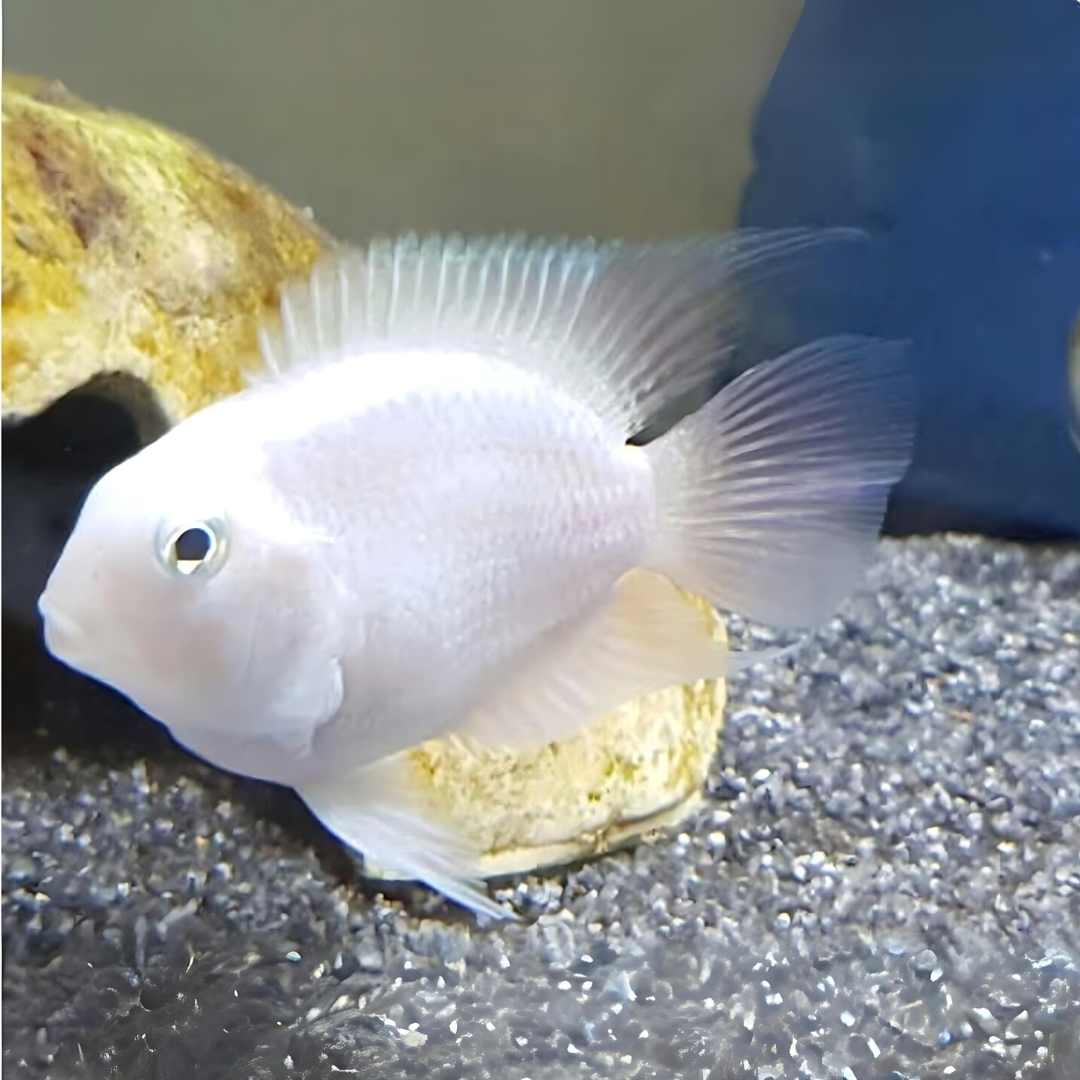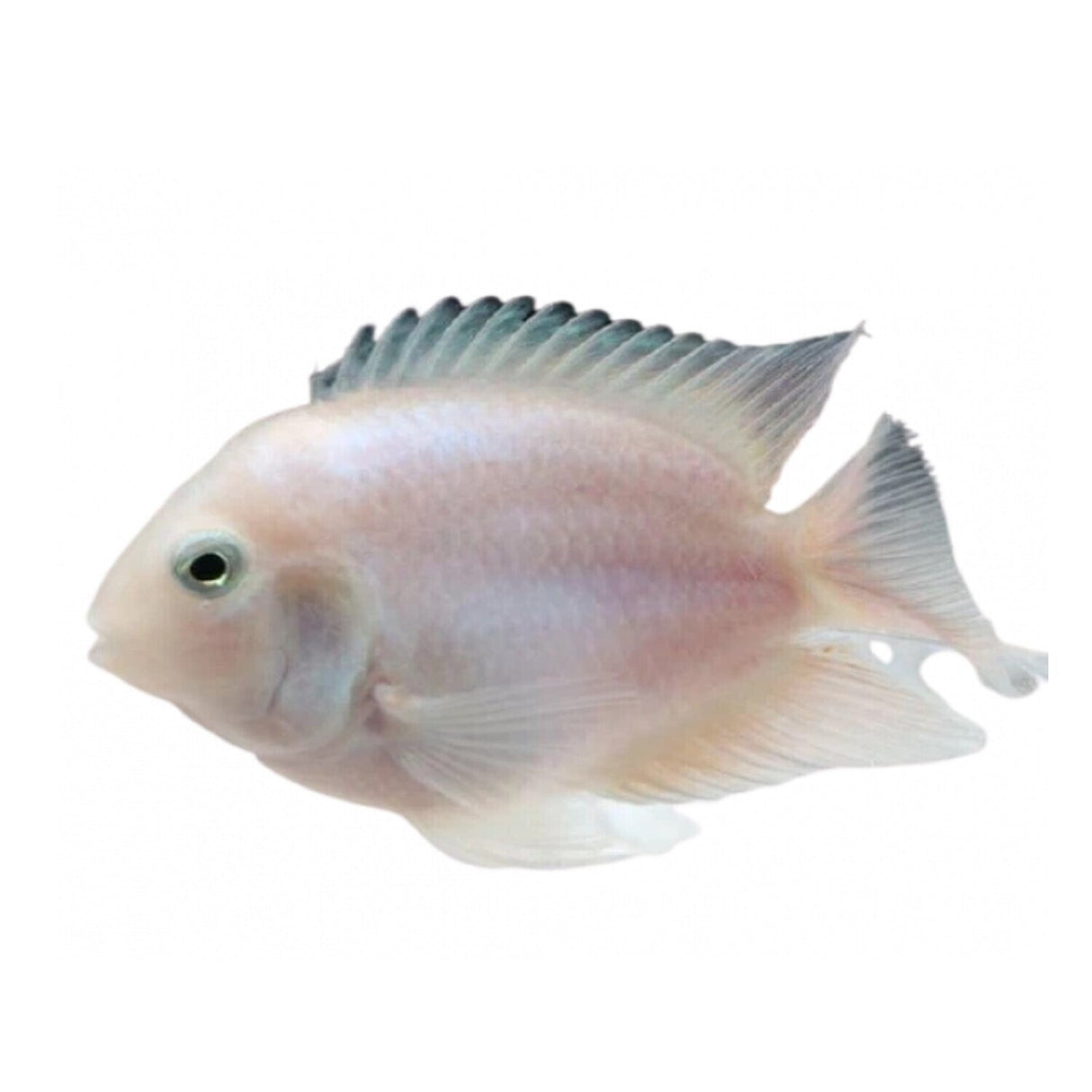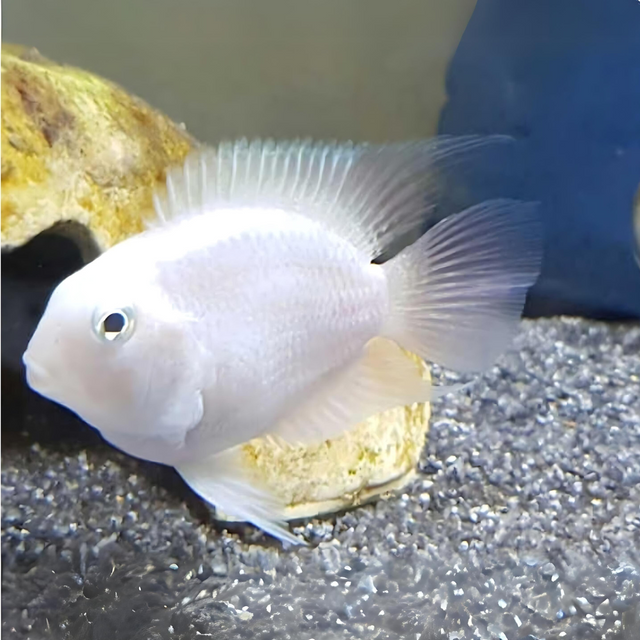White Polar Parrot | Juvenile | Single
White Polar Parrot | Juvenile | Single is backordered and will ship as soon as it is back in stock.
Couldn't load pickup availability
Description
Description
The White Polar Parrot is a captivating and relatively new hybrid cichlid, prized for its unique appearance and engaging personality. Here’s a detailed description of this fish, particularly in its juvenile stage:
Coloration: As juveniles, White Polar Parrots are a brilliant, almost luminescent white, which is their most distinguishing feature. Their bodies are often a uniform white, though some may have slight variations in shading. As they mature, this coloration deepens, making them even more visually striking.
Body Shape: The White Polar Parrot has a distinctive, rounded body shape, characteristic of parrot cichlids. This compact, oval form is somewhat egg-shaped, with a prominent, somewhat compressed profile.
Head and Mouth: One of the most notable features is their beak-like mouth, which resembles a parrot’s beak, hence the name. The mouth is often small and can be slightly malformed due to hybridization, giving it a permanent "smiling" appearance. Their eyes are large and expressive, often appearing inquisitive and alert.
Juvenile Size: At the juvenile stage, White Polar Parrots typically.
Temperament: White Polar Parrots are semi-aggressive fish. While they can be territorial, especially as they mature, they are generally less aggressive than many other cichlid species. However, they should still be housed with similarly sized or larger fish that can tolerate their assertive nature.
Activity Level: These fish are active swimmers, often exploring all levels of the tank but preferring the middle to lower regions. They are known for their curious nature and can be quite interactive with their surroundings and tank mates.
Social Behavior: While they can be kept in a community setting, it’s essential to choose tank mates carefully. Suitable companions include other robust cichlids, larger tetras, or catfish. It’s advisable to avoid housing them with very small or overly docile species, as they may be bullied or stressed.
Tank Size: A minimum of 130 litres is recommended for a juvenile White Polar Parrot, though a larger tank will be needed as they grow.
Water Parameters: These fish prefer slightly acidic to neutral pH levels (6.5-7.5) and temperatures between 75-80°F (24-27°C). They are hardy and can tolerate a range of water conditions, but stability is key to their health.
Decor: Provide plenty of hiding spots using rocks, driftwood, and sturdy plants, as White Polar Parrots appreciate having places to retreat. Open swimming areas are also necessary due to their active nature. Ensure that tank decorations are secure, as these fish can be quite strong and may dislodge lightweight objects.
Diet: White Polar Parrots are omnivores and should be fed a varied diet. High-quality cichlid pellets or flakes can be the staple of their diet, supplemented with live or frozen foods such as bloodworms, brine shrimp, and daphnia. They also enjoy occasional vegetable matter like blanched spinach or spirulina-based foods.




